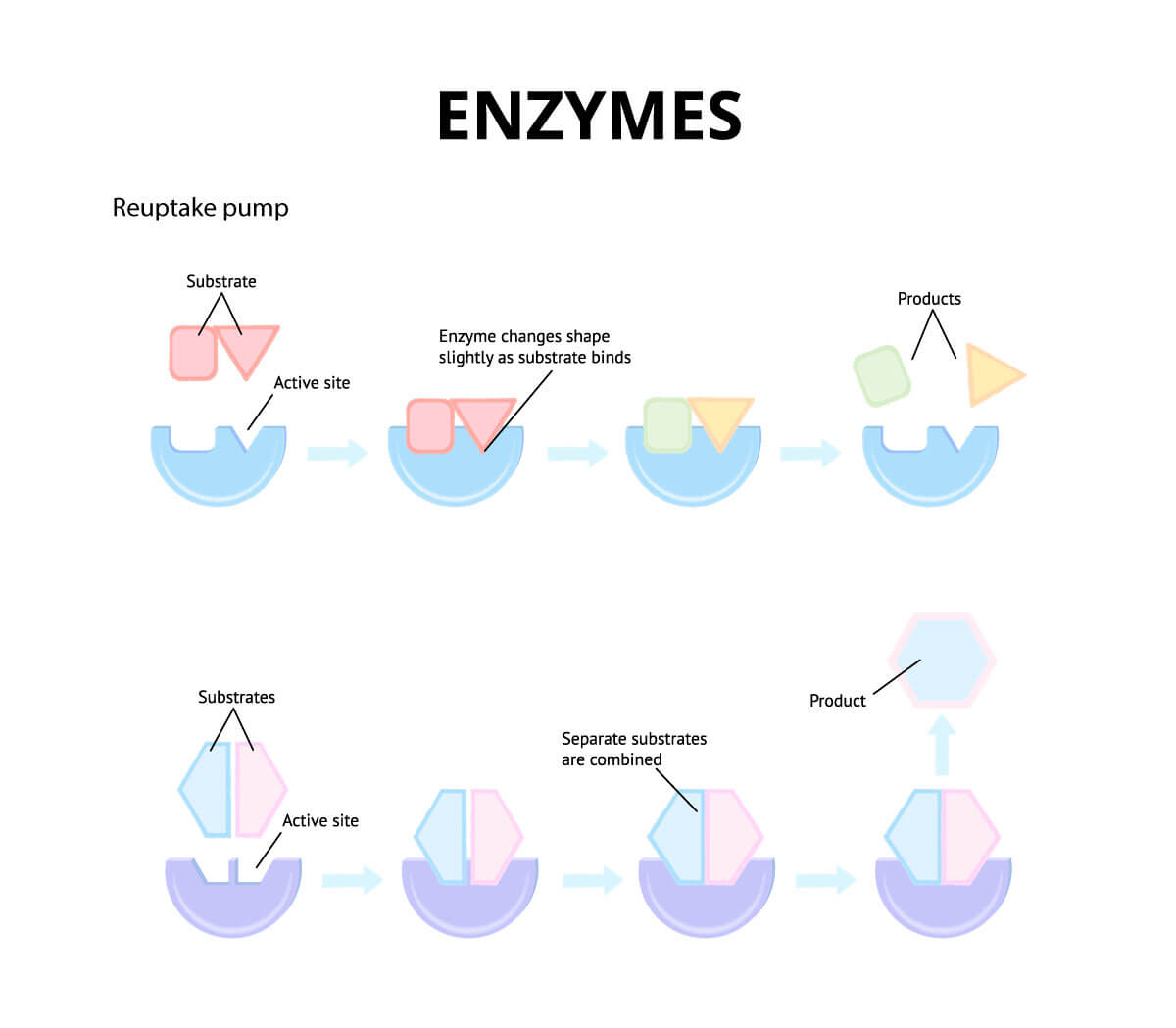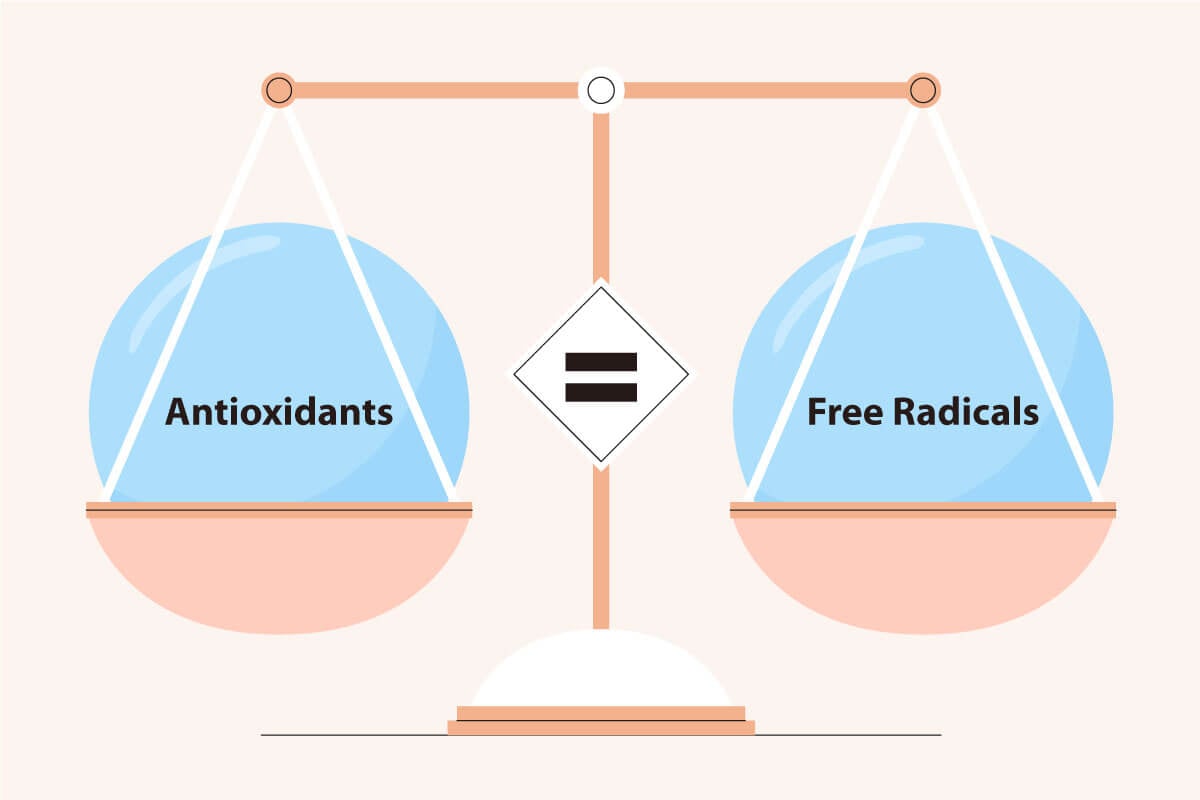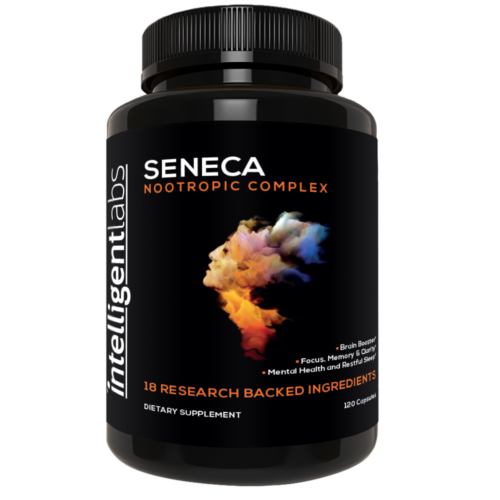PQQ, a.k.a. pyrroloquinoline quinone, is one of the ingredients in our pre-made nootropic stack, Seneca Nootropic Complex. In this blog post, we summarize the different studies on PQQ to find out if it’s really an effective nootropic. To give you an idea, here are some of the highlights we’ve uncovered in our research:
- PQQ stimulates the function and production of new mitochondria, which produce virtually all of our energy.
- It’s a powerful antioxidant that may protect us from oxidative stress.
- It may help improve cognitive function, mood, and sleep.
Table of Contents
But first, what is PQQ?
PQQ is a coenzyme. A coenzyme is an organic molecule that, when combined with an enzyme, helps that enzyme to work.
Enzymes catalyze reactions in the human body, which means they increase the speed at which they happen. They can increase the speed by up to 100,000 times. And without them doing this, life would not be possible! Chemical reactions would happen far too slowly to support what is needed to live.
PQQ has so far been found to be involved in over 20,000 different catalytic cycles (1). This is compared to vitamin C, which is involved in just 4.
Where is PQQ found?
PQQ is formed by bacteria and is found in the soil, where it is taken up into plants. We then absorb it from the plants we eat.
Studies on fruit trees cultivated with hydroponics that includes rhizobacteria (they’re rich in PQQ) yielded interesting results. The trees were taller with more flowers and fruits. Even the fruits were heavier, too. This is compared to trees grown with rhizobacteria that have been genetically modified not to produce PQQ (2).
Here’s an interesting tidbit about PQQ’s discovery…
Few nutrients can claim as exciting circumstances for their discovery as PQQ! Here’s how it was discovered:
In 1999, NASA launched the space probe ‘Stardust’. Its mission was to fly through space and collect space dust samples from the comet ‘Wild 2’ and the asteroid ‘5535 Annefrank’. It took 7 years for the probe to reach both of them. In 2006, a return capsule was sent back to earth for analysis (3).
Following the analysis, scientists found biological molecules in the dust similar to PQQ. This led them to suggest that comets and asteroids brought space dust to the earth billions of years ago. This dust contained the original biological molecules that eventually went on to form all life on earth. And yes, PQQ was one of these original molecules!

What are the benefits of taking PQQ?
The results have been very promising in animal and human studies on PQQ! Here are some notable PQQ benefits:
1) It may increase mitochondrial function
PQQ is perhaps most active in its effects on mitochondria. There are, on average, between 2000 and 3000 mitochondria in each of our 20 trillion or so cells. Their primary role is to produce energy. But they also help produce cholesterol and steroid hormones, as well as uric acid. Additionally, they help break down proteins.
Animal studies have shown that when fed a PQQ-deficient diet, the number of mitochondria goes down. Consequently, the amount of energy they produce goes down as well (4).
Reduced mitochondrial function is related to just about every health problem we can suffer from. Examples include developmental disorders, heart disease, and cancers. Efficient mitochondrial function is also vital for proper cognitive function (5).
Further studies have shown that PQQ stimulates the PGC-1α gene. This gene is the key controller of mitochondrial biogenesis, meaning it produces more mitochondria when stimulated. PGC-1α also reduces free radical levels in the body and protects the mitochondria against toxins (7).
2) It may help with longevity
The PGC-1α gene is associated with increased longevity (8). It may help reduce neurodegeneration by preventing and reducing the formation of beta-amyloid proteins, which cause Alzheimer’s. It also prevents the alpha-synuclein proteins associated with Parkinson’s (9).
3) May help improve brain neuroplasticity
PQQ may also stimulate the production of the Nerve Growth Factor (NGF). The NGF stimulates the growth of new nerves and the regeneration of existing ones (10, 11). It is very important for improving brain neuroplasticity and learning.
In experimental models of stroke and spinal injury, PQQ is able to protect neurons from death. More specifically, it may protect the NMDA receptors from inflammation caused by excessive glutamate stimulation and peroxynitrite (a neurotoxin) (14, 15). Healthy functioning of the NMDA receptors is vital for neuronal plasticity, learning, and memory (16).
4) It’s a powerful antioxidant
PQQ also acts as a strong antioxidant. Studies show it may even be more effective than vitamins E and C in preventing oxidative damage to peritoneal cells (found in the abdomen). Additionally, it may protect liver and heart cells from oxidative stress. During cardiac ischemia, PQQ may be able to protect heart cells from damage, too (17, 18).
Moreover, PQQ may also stimulate the production of other endogenous antioxidants, namely, glutathione, superoxide dismutase, and catalase. These antioxidants help break down the potentially dangerous molecules, superoxide and hydrogen peroxide, into water (14).

5) It may contribute to immunity, growth, and development
PQQ also seems to play an important role in the health of our immune system. Mice fed with a PQQ-deficient diet led to reduced production of IL2, an immune system signaller. IL2 helps produce T-cells during an immune response to a pathogen attack (19).
Diets deficient in PQQ also led to lower fertility, reduced neonatal survival, and lower growth rates in mice, indicating a further important role for PQQ in development (20).
6) It may help improve mood and sleep
A Japanese study used 17 subjects with a diagnosed sleep disorder and gave them 20mg of PQQ for 8 weeks. At the end of the 8-week period, they found that the subjects had significantly improved sleep quality and felt less fatigue, too. They also experienced less depression, anxiety, and pain, and had improved appetites.
7) It may help improve attention
Elderly subjects given 20mg of PQQ for 12 weeks scored higher on tests for attention and visual-spatial cognitive function. Visual-spatial tests look at how well people can judge where they are physically from visual information. They also measure rates of age-related cognitive decline (21).
What are the benefits of combining PQQ and CoQ10?
There seems to be a synergy between PQQ and CoQ10. Both PQQ and CoQ10 have a big impact on the mitochondria. Specifically, CoQ10 is active in the electron transport chain; this is the second phase of energy production in the mitochondria. CoQ10 takes electrons from hydrogen atoms and then passes them down the electron transport chain, so they can be safely converted into water.
Related article: What Coenzyme Q10 (CoQ10) Actually Does For Your Body
PQQ + CoQ10 may help improve cognitive function
A study on 65 subjects between 50 and 70 who had forgetfulness (identified by a family member, colleague or acquaintance), tested the subjects with just PQQ, PQQ, and CoQ10 or a placebo for 24 weeks. The subjects received either 20mg of PQQ and 300mg of CoQ10 in the PQQ/CoQ10 group and 20mg of PQQ in the PQQ-only group.
Both the PQQ group and the PQQ/CoQ10 group had significantly improved scores on all of the 5 cognitive tests. These tests measured immediate memory, visual-spatial ability, language, attention, and delayed memory. They also found that scores for the PQQ/CoQ10 group were higher than the PQQ alone group (22).
PQQ + CoQ10 may help increase cerebral blood flow

A further study went on to try to find the mechanism that led to improved cognitive function. Researchers concluded that PQQ helped to increase cerebral blood flow, increase oxygen saturation in the blood as well as oxygen utilization in the pre-frontal cortex area of the brain (23).
Oxygen use is a measure of how much the mitochondria are working. They use oxygen to turn the electrons from the hydrogen atoms safely into water, as was briefly mentioned above. So an increased oxygen utilization shows increased mitochondrial function.
Both CoQ10 and PQQ are included in our nootropic stack Seneca Nootropic. Each serving of Seneca contains 18 research-backed ingredients, including 100mg of CoQ10 and 10mg of PQQ.
Related article: What Are Nootropics and Cognitive Enhancing Supplements?
What’s the best PQQ dosage?
There is currently no official recommended dosage for taking PQQ. But so far, human studies have used 20mg of PQQ daily.
What foods contain PQQ?
The highest concentration is in fruit and vegetables. Also, human breastmilk is a rich source of this molecule.
Conclusion
Relatively speaking, we are still very early in our knowledge of PQQ because it has only recently been discovered. But taking PQQ supplements has a lot of potential benefits, including as a powerful nootropic like our Seneca Nootropic Complex. Hopefully, the future will bring more studies on humans that will allow us to understand its role in human health further.
Related article: Seneca Nootropic Complex 101: What Makes This Nootropic Stack So Good?




